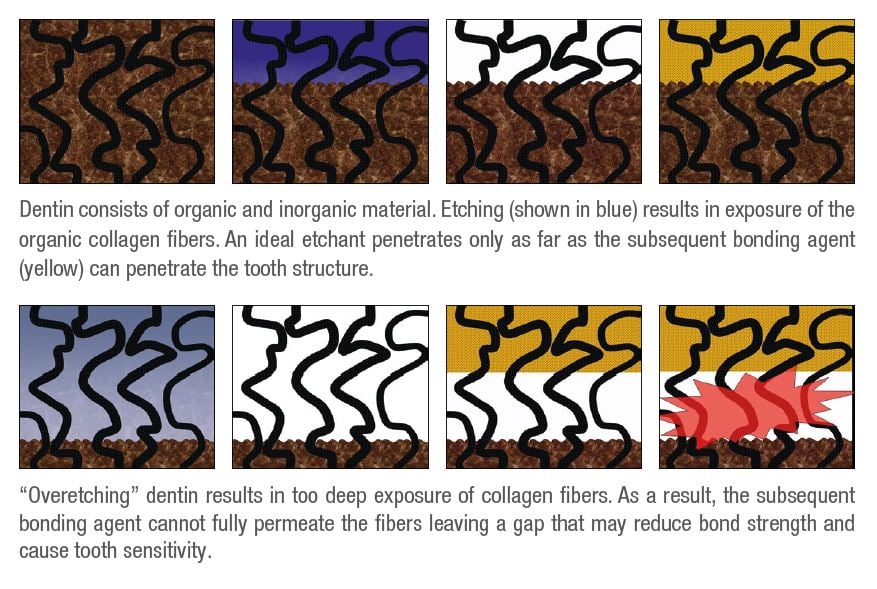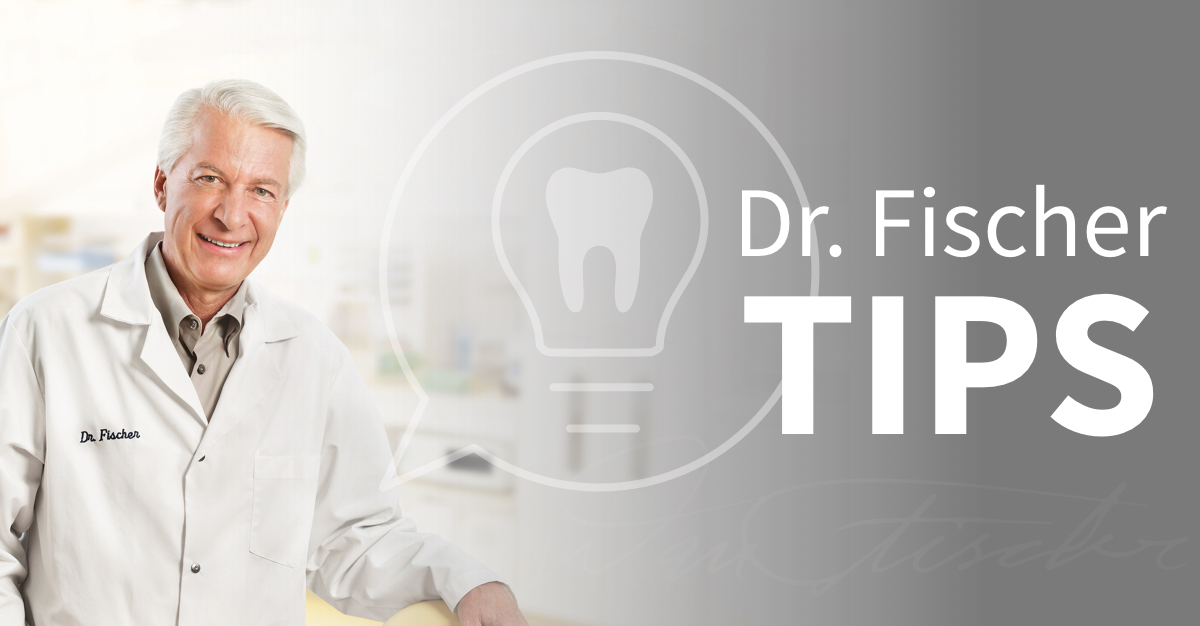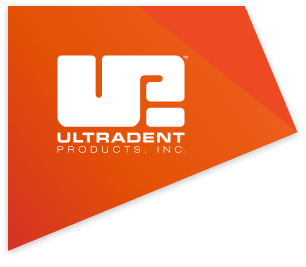The adhesive technique is one of the genuine revolutions that have occurred in dentistry
during the last decades. The use of the adhesive technique has opened a variety of possibilities in terms of minimally invasive and aesthetic treatments. Together with Neil Jessop, our head of R&D at Ultradent Products USA, we have identified eight important aspects that influence bonding treatments:
1. Etching
Excessive etching times may cause results too deep in dentin, making it difficult for the bonding agent to penetrate the healthy tooth structure. Approximately 2-2.5 μm are the limit. In cases where the dentin is etched deeper an etching gap appears, which can lead to weaker bond strength and eventually to sensitivities (see picture).
 That’s why…
That’s why…
Dentists should use an etching agent with a limited penetration depth, for example our Ultra-Etch™ etchant. Ultra-Etch etchant only creates a depth of Ø 1.9 μm. And if left longer on the tooth than the recommended 15 to 20 seconds, it does not keep etching deeper, deeper, deeper to the level of other etching gels. It is more self-limiting.
2. Dentin drying
Overdrying the dentin after the etching procedure can affect the adhesion values of some adhesives severely. The exposed collagen fibres can stick together during the drying process and won’t be soaked by the bonding agent any longer.
That’s why…
Dentin should only be dried with smooth and short air blasts after etching and rinsing, in order to remove any standing water. Alternatively, a cotton pellet can be used. In case of any overdrying, moisten the dentin again (e.g. with a wet pellet).
3. Application time
If the application is done in too short a time (rubbing in, brushing in, moving), this may lead to an insufficient penetration of the bonding agent, i.e. incomplete hybridization.
That’s why…
Bonding agent should be scrubbed in firmly. This can easily be done with Ultradent Products, Inc. Brush Tips. It is best to do this for at least 15 to 20 seconds.
4. Blowing/Drying
If the adhesive layer is thinned out too much, it will not polymerize sufficiently due to the arising inhibition layer. However, if it is too thick it might still contain solvents.
That‘s why…
A rich bonding layer should be applied/scrubbed in but then air thinned and air dried. A significant part of the liquid is based on solvents, which need to be evaporated off before polymerising the resin. Blow gently but consistently—better longer and gentler than shorter and stronger. Again, make sure you stick to the predetermined times.
5. Light curing
Insufficient or too short light curing protocols lead to an only partial polymerization of the bonding resin.
That’s why…
High-performance curing lights with at least 800 mW/cm2 should be used or even better, 1200 mW/cm2.
6. Composite placement
Voids may occur in cases where the composite is not sufficiently adapted to the bonding layer.
That’s why…
A flowable composite should be used for the creation of the first thin layer, for example UltraSeal XT™ plus sealant or PermaFlo™ composite. This way irregularities in the cavity bottom, into which a pasty composite could hardly be stuffed, can be adjusted.
7. Contamination
The contamination with blood, sulcus fluid, or saliva prior to or during the bonding process will lead to the formation of separate layers that prevent a proper adaptation or adhesion.
That’s why…
Blood and sulcus fluid should be controlled. For example, using the Ultradent Products, Inc. Tissue Management System. If possible, use a rubber dam.
8. Expiration
After expiring, adhesives or composites will most likely not polymerize sufficiently.
That’s why…
Expired products should not be used any longer. Make sure you observe the storage regulations (if necessary, store the material in the refrigerator). If dispensed from a bottle, close it immediately after use. Otherwise solvent will evaporate and the material will become useless prior to the expiration date. This problem is non-existent with products that are stored and applied from syringes.
By now, adhesive agents have reached a high level of quality. However, a deep understanding of the bonding processes is required if dentists want to achieve lasting and successful results… and of course a quality adhesive treatment.
Best regards,

Dan Fischer
About Dr. Fischer
Dr. Dan Fischer is the founder and CEO of Ultradent Products, Inc., a leading dental manufacturer of high-tech dental materials, devices, and instruments with a 40-year history of innovation and quality. Its products are used worldwide by dentists, orthodontists, group practices, dental labs, government agencies, and universities. Ultradent Products’ vision is to improve oral health globally. For more information visit ultradent.com/eu.








